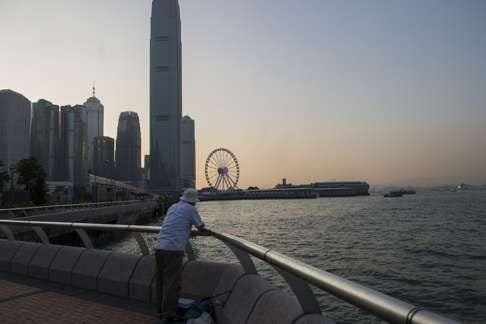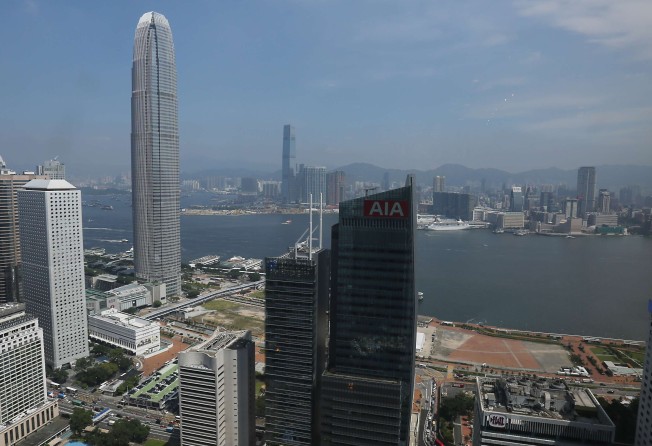
Hong Kong’s Central still the best bet for businesses as vacancy threats diminish
Strong demand from mainland Chinese companies, especially in banking and finance sector will continue to boost demand

Long-term rental savings have always been, unsurprisingly, a big pull factor for businesses when relocating from one business district to another, including out of Central. This has been tempered by locational boundaries for certain business sectors in a unique market where the right end of Central has been an important location consideration for many banking and finance businesses.
From 2007 through 2010 there were a number of major relocations out of Central. These were driven, in the early part of the cycle, by new supply in International Commerce Centre and One Island East, both providing the specifications and significant rental discount to Central. The decentralisation post the global financial crisis was primarily driven by cost and a wave of new supply in Kowloon East from 2007-2010, totalling 5.2 million square feet that pulled tenants from across Hong Kong Island. This was hot on the heels of Morgan Stanley, Deutsche Bank and Credit Suisse committing to ICC.
At that point in time landlords in Central were facing a relocating client base that did not have a natural replacement, in a poor economic environment. This encouraged significant changes in rental policy that saw rents drop by 35 per cent in 2009, holding off a larger exodus from Central to districts that were not as well connected as they will be when the next cycle begins.
Such moves, or potential moves out of Central, have historically pushed landlords into action to stem the threat of tenant outflow, by offering attractive long term renewal positions. This may not continue to be the case as we enter into the next cycle of new supply from the middle of next year. Less than satisfactory business conditions, the most expensive premium central business district rents globally, close to zero vacancy, continued demand from mainland companies and a booming sales market offer up a different dynamic. One that is likely to lead to another round of decentralisation.

The banking and finance sector has had a couple of false starts when it comes to opening up or re-evaluating alternative districts as suitable ‘front office’ locations. International Commerce Centre attracted three large movers on the pull of significantly lower rents and the push of both expansionary demand and a need to upgrade physical real estate. As spectacular a building as ICC is, the immediate area has not transformed into the district many envisaged, due to infrastructure progress and the significant delay of further commercial sites becoming available.
As Hong Kong grows, it is not simply the pull of new districts that will accelerate the next wave of decentralisation but new push factors that may provide Central landlords with the confidence they need to hold firmer on rents. Mainland finance institutions, investors and owner occupiers who have a thirst for trophy assets will be among the biggest players. The appetite from mainland corporates is well documented and shows no sign of slowing down. It accounted for 39 per cent of Central demand in 2016 year to date, up from 19 per cent in 2012. There is significant pent up demand for quantum grade A stock as it comes to the market, as evidenced in numerous competitive bids for any sizeable floor space that comes available in One or Two IFC. Despite these tenants not being household names in Hong Kong, many have the China track record and financial clout to be considered long term growth tenants in Hong Kong. As they grow and become familiar business names in Hong Kong we expect to see an increased willingness across landlords to embrace a growing mainland Chinese client base, which will go a long way to counter the decentralisation of multinational banking and finance tenants.
As was the case in 2008, the lack of new supply in Central for the traditional banking and finance sector will put a spotlight on an ageing Grade A building base. There is notable demand for new government sites, like Murray Road car park, from mainland tenants and investors. If occupied by the end purchaser, this may potentially take out high quality space that would otherwise have been made available to the leasing market.
Infrastructure changes, new supply and a willingness of developers to create a wide range of amenities in other districts to rival Central, go past the traditional pull factor of savings and point to a longer term trend of multiple ‘core’ office nodes that will change Hong Kong’s business districts. New supply in Kowloon East will expedite this process as landlords on Hong Kong Island lift their offering to appeal to an enhanced client base past pure rental savings.
The potential for banking and finance and professional services sector businesses relocating to another district, better connected as infrastructure projects complete, is very real. The difference from past cycles is that the threat of vacancy sitting on the books of Central landlords has diminished due to the demand from mainland Chinese firms who are likely to be the majority source of growth demand for the Grade A market in Central.
Damaging headlines regularly confirm Hong Kong’s central business district rents far exceed all other major global cities. But few major financial hubs can boast that occupational savings of more than 60-70 per cent can be found within a 10-15 minute drive from their central business district.
Alex Barnes is head of Hong Kong markets at JLL